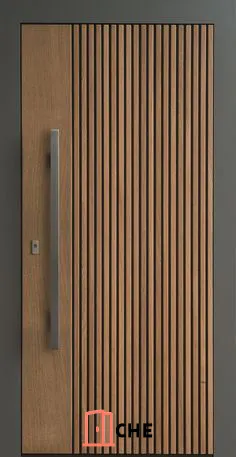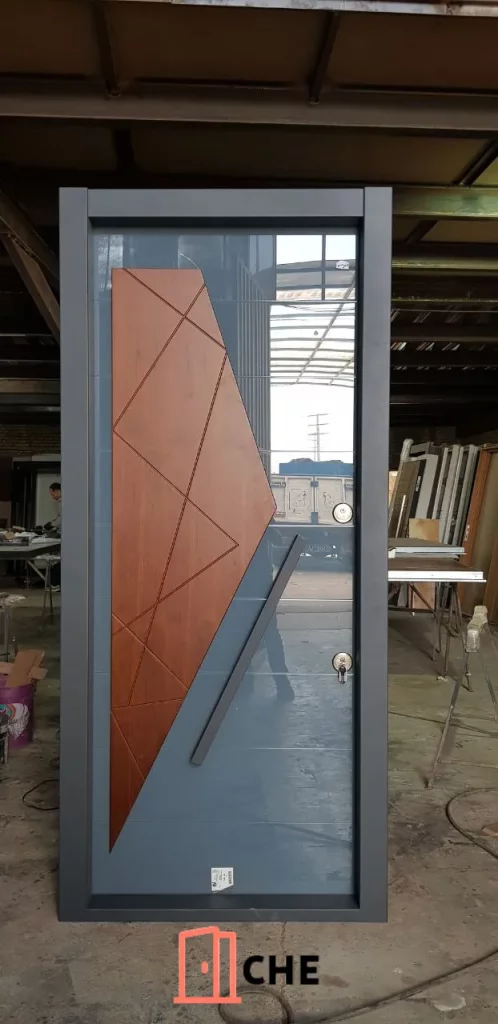Pivot Doors: Elevate Your Space with Elegance and Functionality
In the realm of modern home design, pivot doors have swiftly emerged as a stylish preference. Whether gracing the exterior or interior, these doors effortlessly infuse an unparalleled air of refinement and contemporary panache. For those seeking to make a statement upon arrival, exterior pivot doors stand as a chic choice. Meanwhile, within your living space, pivot doors seamlessly complement various settings. Yet, what precisely sets pivot doors apart? How do they operate, and what sets them ahead of the conventional hinged doors? This composition is poised to provide answers. Delve into the mechanics and advantages that pivot doors bring forth. Discover the array of pivot systems available. As you conclude, you’ll be empowered to ascertain whether pivot doors align harmoniously with your abode.

The Unique Essence of Pivot Doors
Hinged doors easily register with people due to their familiarity in everyday use. The concept involves two or three hinges affixed to one side of the door, enabling it to swing open and shut along these pivot points. However, pivot doors often leave an indelible impression on those encountering them for the first time. The initial astonishment stems from their distinct nature. Unlike hinged doors, pivot doors need not open from the very edge. They usually boast an offset configuration, placing the pivot point a few inches inward from the door frame. This ingenious setup allows the door to pivot open quite literally (with no conventional hinges in play). Remarkably, some pivot doors pivot at their midpoint, bestowing the entrance to the space with an enchanting aura reminiscent of a hidden passage. And let’s be honest, who wouldn’t relish the notion of a bedroom so secluded that it warrants a clandestine entrance?
The Mechanics Behind Pivot Doors: How do they work?
In stark contrast to hinged doors, which find their mobility governed by lateral hinges, a pivot door pivots around a solitary vertical axis known as a spindle. This innovative mechanism relies on a pair of pivot hinges: one affixed to the upper edge of the door and the frame’s header, and the other fastened to the door’s lower edge and the floor. The door gracefully rotates from a singular axis point by harnessing the power of these two pivot hinges. The strategic positioning of these pivot hinges within the entryway is variable, dictating the axis’s placement and effectively partitioning the entryway into two distinct zones when the pivot door stands ajar.
When the hinge is situated a few inches away from the door’s side, it becomes the pivot door’s “tail” during its swinging motion. This configuration gives rise to an inward swing for an outward-pivoting door and an outward swing for an inward-pivoting door. This dual-directional movement not only fosters a modern aesthetic but also endows the door’s motion with a graceful, exquisite quality.
Advantages of Opting for Pivot Doors
Efficient Clearance Space: One notable advantage of choosing pivot doors over casement doors lies in their reduced need for clearance space during opening. The extent of this reduction is adjustable based on the placement of the pivot mechanism, catering to the requirements of each unique project.
Concealed Outer Frames for a Streamlined Look: Many individuals favor the ability of pivot doors to conceal their outer frames within the building finishes, resulting in an ultra-minimalistic appearance. This design feature ensures that, when the door is open, there is no bulky outer frame to detract from the surrounding environment.
Stylish Equal Framing: Pivot doors boast a sought-after design element—a symmetrical framing that encompasses the glass pane’s perimeter. This balanced and contemporary framing design is appealing to many discerning individuals.
Support for Larger Sizes and Weights: Unlike casement doors with hinges on the side, pivot doors are attached to the building structure at the top and bottom. This unique setup enables pivot doors to accommodate greater sizes and heavier weights. The strategic weight distribution, coupled with engineered pivot mechanisms, allows these doors to support substantial glazing units, making them ideal for triple glazing and expansive structural openings. The minimal windows Pivot Door, for instance, has been tested at remarkable dimensions of up to 1.8m wide x 3m tall.

Integrated Self-Closing Mechanisms: Many pivot doors seamlessly integrate self-closing and/or soft-closing mechanisms. This feature proves immensely valuable for individuals who tend to leave doors ajar or inadvertently slam them shut.
Elegant Aesthetics with Invisible Hinges: Pivot hinges remain discreetly hidden on pivot doors, allowing the door’s design to take center stage, resulting in a captivating aesthetic.
Material Versatility: Pivot doors can be crafted from various materials, provided the hinges can be mortised inside the door, granting architects and designers creative freedom.
Support for Heavy and Large Doors: The placement of pivot hinges empowers architects to specify doors of substantial weight or generous size. The vertical weight distribution ensures stability, enabling pivot doors to even reach weights of up to 500 kgs when equipped with the appropriate pivot system.
Ease of Installation: Whether for new constructions or renovations, pivot doors are user-friendly to install in a range of projects.
The versatility of Applications: Pivot doors are equally adaptable for both interior and exterior applications, serving as harmonious additions to modern and contemporary architectural designs.
Seamless Interior Integration: Frameless pivot doors can seamlessly blend with the interior architecture, creating a unified visual flow.
Customizable Features: Pivot doors can be outfitted with various features, such as self-closing mechanisms, hold positions, damper control, and latch control, catering to diverse preferences.
Effortless Operation: Regardless of their size and weight, the appropriate pivot hinge empowers easy, fingertip-operated opening and closing of pivot doors.
Enhanced Security: Pivot doors offer elevated resistance against forced entry due to their lack of exposed hinges.
Added Security Features: Pivot doors can further bolster security with the integration of multi-point locking systems, ensuring peace of mind.
Incorporating pivot doors into your design brings forth an array of functional and aesthetic benefits, making them an appealing choice for a variety of architectural contexts.

Varieties of Pivot Hinges: Exploring Functionality
The market abounds with an array of pivot hinges, each presenting its distinct characteristics and brands. The pivot hinges nestled within pivot doors often grant supplementary features, dictated by the hinge’s brand and the chosen hinge system. Within this landscape, two primary types of pivot hinges stand out: offset and center-hung. An offset pivot hinge veers from the door’s surface, while a center-hung hinge positions itself at the midpoint of the door’s thickness. Let’s delve into the principal pivot hinge categories categorized by their functionalities:
Regular Pivot Hinge: Operating as a singular pivoting point, the regular pivot hinge lacks advanced features like hold positions or self-closing mechanisms. The uncomplicated nature of this hinge makes it fitting for both single and double-acting pivot doors.
Pivot Hinge with Hold Positions: This hinge variety offers diverse hold positions, prompting the pivot door to automatically align with these positions at 0°, 90°, 180°, or 270° angles. Such pivot hinges prove optimal for pivoting walls, providing exceptional flexibility.
Self-Closing Pivot Hinge: Equipped with damper control, a self-closing pivot hinge offers customizable soft-close settings and a hydraulic backcheck. Often incorporating hold positions at the aforementioned angles, this type of hinge suits a broad spectrum of interior and exterior applications.
Pivot Hinge with Latch Control: Encompassing damper control, speed control, and latch control, this hinge variant ensures the consistent and precise closure of the pivot door. Particularly well-suited for hefty and oversized exterior pivot doors, this pivot system enhances both functionality and security.
In the realm of pivot hinges, the diverse spectrum caters to an array of applications, from regular doors to pivoting walls, enabling architects and designers to select the optimal hinge type to seamlessly integrate into their designs.
Guidelines for Pivot Door Installation
The installation of a pivot door entails a straightforward process comprising four fundamental stages:
Affixing the Floor Plate:
Commence by creating the required milling in the seal at the accurate location. Utilize an appropriately sized and suited drilling template to bore the holes for the floor plate. Apply adhesive to these holes and the underside of the floor plate. Using a rubber hammer, securely position the floor plate in place.
Attaching the Ceiling Plate:
Determine the placement of the ceiling plate using a point laser as a guide. Proceed to drill holes for the ceiling plate and then apply adhesive to these holes and the upper surface of the ceiling plate. Complete the process by securing the ceiling plate using screws.
Installing the Pivot Door:
Position the door over the floor plate, ensuring it remains in its open position. Extend the top pivot and rotate the spindle downwards to seamlessly engage with the receiver situated atop the door.
Fine-Tuning the Pivot Door:
Depending on the specific pivot system employed, fine-tune the placement and motion of the door as required. This stage enables customization to achieve the desired functionality.
By following these comprehensive steps, the installation of a pivot door can be accomplished effortlessly, guaranteeing a seamlessly integrated and fully operational enhancement to your environment.



